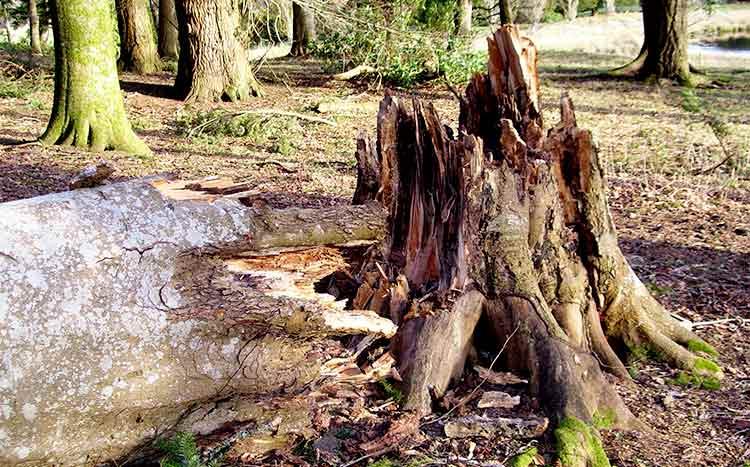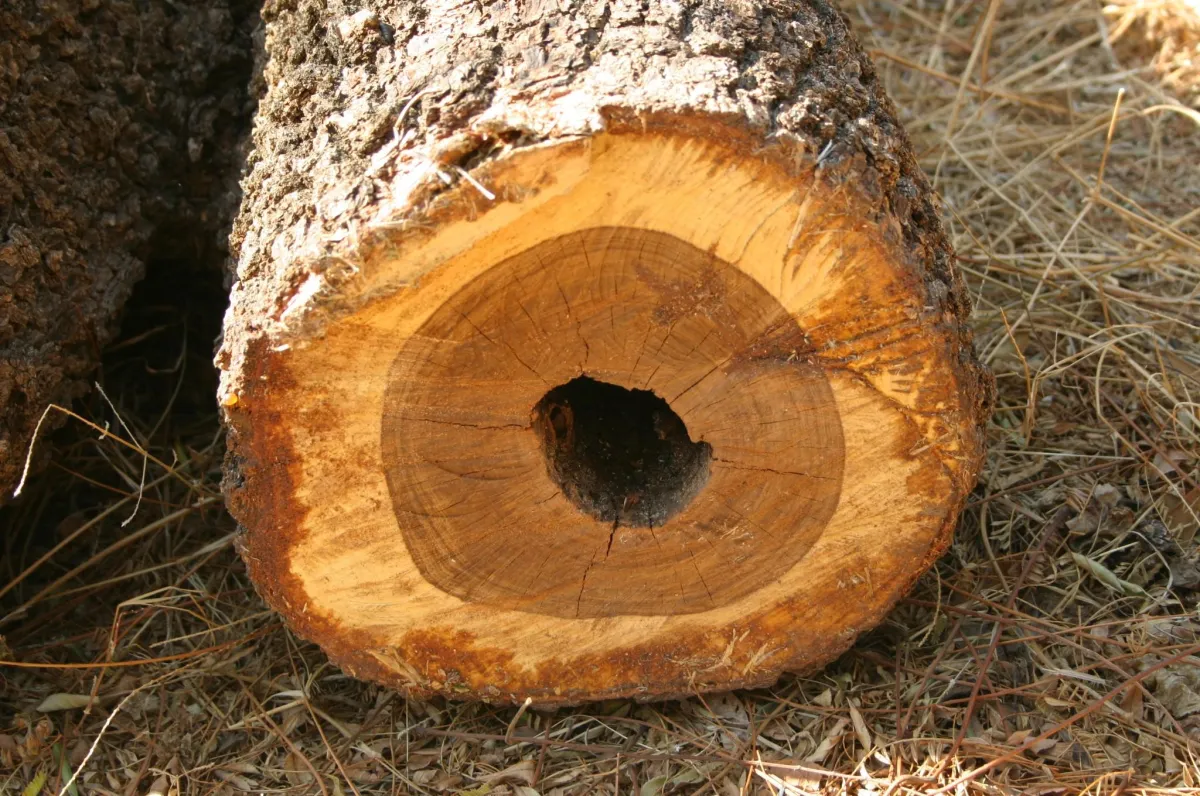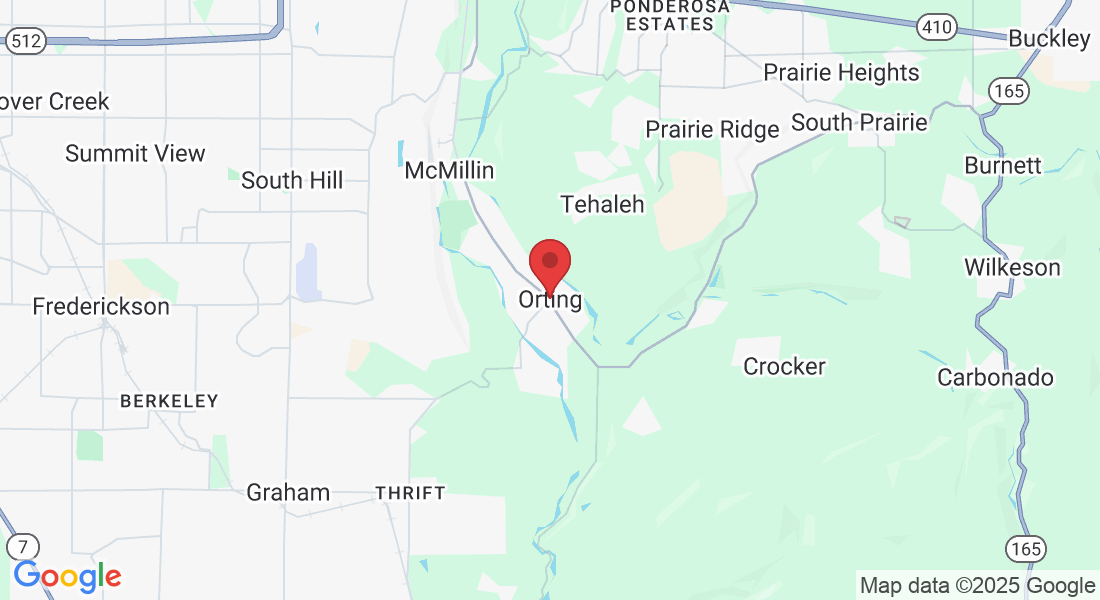Orting Tree Service
Tree Stump Removal Services
How Can Stump Removal In Orting Prevent Pest Infestations?
Are you curious why pests have found a safe haven in your yard?
One overlooked reason is often times tree stumps that were not properly removed and disposed of. In Orting, WA, the climate provides ideal conditions for pests, and tree stumps can become a major problem when pests make them their home. Let's explore the connection between tree stumps and pest infestations. Discover how removing these stumps can help you maintain a pest-free environment.
Top Reasons Why Tree Stumps Are Attracting Pests to Your Property
Decaying Wood: As tree stumps proceed to decay, they create an ideal habitat for many pests. The rotting wood acts as shelter and also provides a food source for insects and rodents. Termites, particularly, are drawn to the cellulose in decaying wood, making stumps an ideal target. Termites that can eventually reach your home.
Moisture Retention: Tree stumps retain moisture, especially in the damp environment of Orting. This moisture attracts pests like termites and ants, which thrive in such damp conditions. Additionally, standing water around stumps can become a breeding ground for mosquitoes and other bothersome insects.
Shelter and Food Source: Tree stumps offer both shelter and food for various pests. The crevices and cracks in the wood provide hiding spots for insects, while the decaying material offers sustenance. Rodents like mice and rats find tree stumps appealing as they can gnaw on the wood and build nests within areas they hollow out.
Are You Having a Tree Service Emergency?
Our Emergency Tree Removal Services are Available 24/7
What Are Some Common Stump Diseases Found in Orting, Washington?
Here's a list of some tree stump diseases that may affect the stumps in your yard:
Powdery mildew:
Powdery mildew is a common fungus that appears as a white or gray powdery coating on leaves and stems.
Anthracnose:
Anthracnose is a blight that causes large blotches and small purple-rimmed spots on tree leaves.
Bacterial canker:
Bacterial canker is disease of sweet cherry trees that causes dark cankered areas on trunks and branches.
Laminated root rot:
This is a root rot fungus native to the Pacific Northwest that infects trees in small clumps.
Annosus root disease:
A fungal disease that causes root and butt decay in conifers. Infected trees have thin, pale foliage and reduced height.
Armillaria root rot:
Also called shoestring root rot, this disease is caused by the fungus Armillaria mellea. It can affect virtually all trees and other wood species.
Leaf spot:
Leaf spot is a disease caused by Cladosporium herbarum that has been reported in Washington.
Diseased trees pose serious risks, including structural instability and the potential for falling branches, which can threaten both property and personal safety. Tree removal services are essential in managing these hazards.
Certified arborists can accurately diagnose tree diseases and determine when removal is necessary. Using specialized equipment, they safely and efficiently remove diseased trees while adhering to strict safety protocols.
Preventive measures such as proper watering, fertilization, and regular pruning can help maintain tree health and prevent disease. Regular inspections by tree care professionals ensure early detection and timely management of potential issues.
Promptly addressing tree diseases is crucial to protecting the beauty and safety of your property. For expert diagnosis and proactive tree health management, contact Orting Tree Service and request a quote so you can ensure a healthy, vibrant landscape for years to come.
Orting Tree Service
Protect Your Home From Storm Damage
Seasonal Tree Care Tips for Homeowners and Residents of Orting, Washington.
Caring for your trees year-round is essential to maintaining their health and longevity. In Orting, seasonal changes can have a significant impact on your trees, making it important to adjust your care routine to the needs of each season.
Spring is a time of renewal. Begin by inspecting your trees for any winter damage, such as broken or dead branches. Spring pruning encourages new growth and improves the tree’s structure. Remove any deadwood, shape the tree, and fertilize the soil to provide essential nutrients. Implement pest and disease management strategies to prevent common issues that can arise during the spring months.
Summer brings heat and storms, which can stress trees. Deep watering is crucial during dry spells—water early in the morning or late in the evening to reduce evaporation. Mulching helps retain moisture and keeps roots cool. Prepare for summer storms by pruning weak branches and providing extra support with cabling, if needed. Stay vigilant for pests, which can be more active in summer, and treat them promptly to avoid damage.
Fall prepares your trees for the colder months. Rake and compost fallen leaves to keep your yard tidy and enrich the soil. Fall is also a good time for pruning to shape the trees and prepare them for dormancy. Fertilize your trees to strengthen them before winter, and take measures to prevent fall pests and diseases that can weaken your trees.
Winter requires extra protection and monitoring. Young trees should be wrapped to prevent frost damage, and it’s important to check for snow and ice buildup on branches, which can cause breakage. Winter is also an excellent time for pruning, as trees are dormant. Keep an eye on your trees for signs of stress, and water them during thaws to ensure the roots stay hydrated.
Year-round tree care ensures your trees remain healthy, robust, and beautiful. For professional assistance with tree maintenance in Orting, contact your local tree care experts at Orting Tree Service. Proper care not only enhances the appearance of your landscape but also contributes to the overall health and well-being of the environment.


Contact Us:
Call: (253) 470-6464

